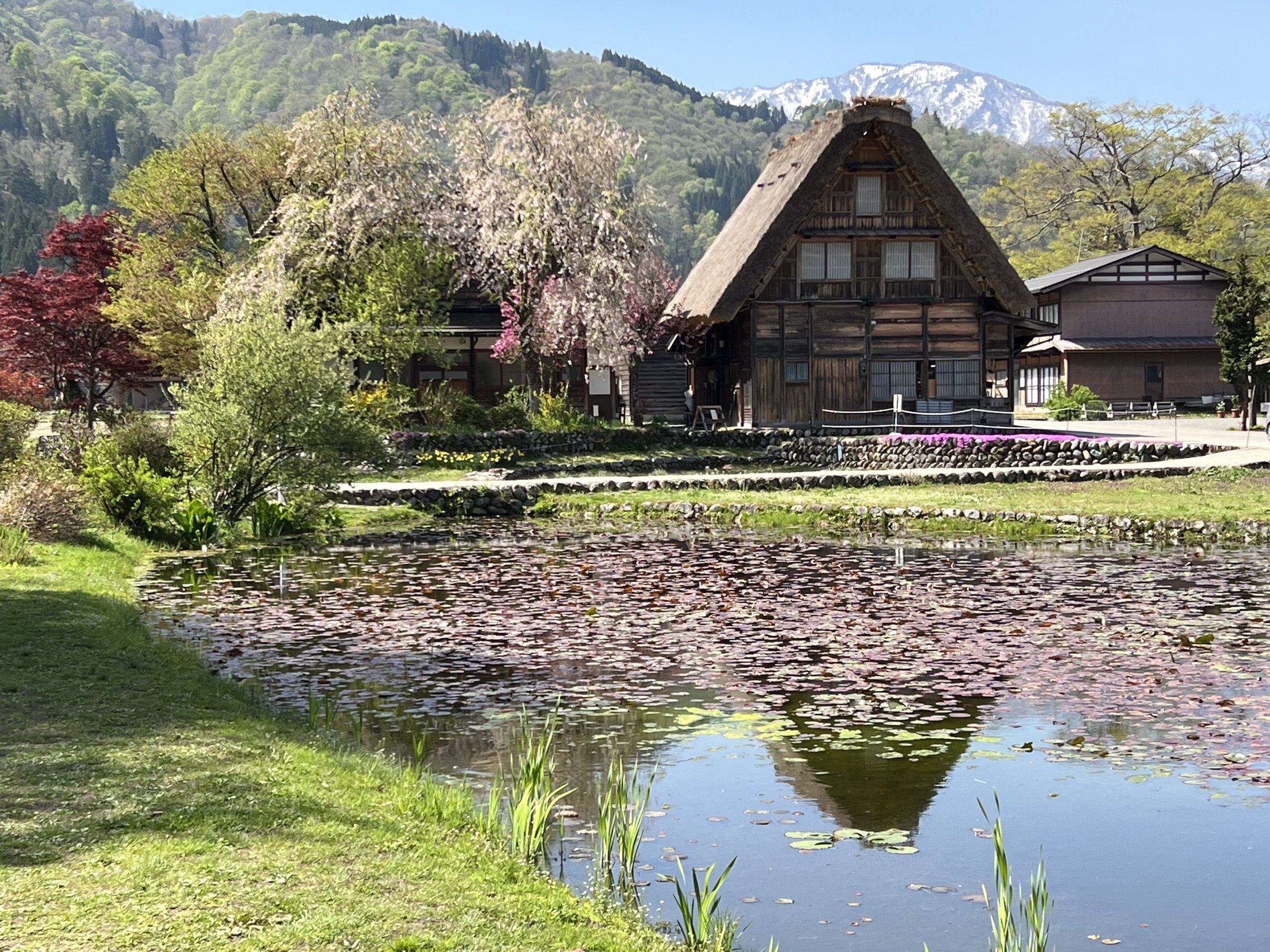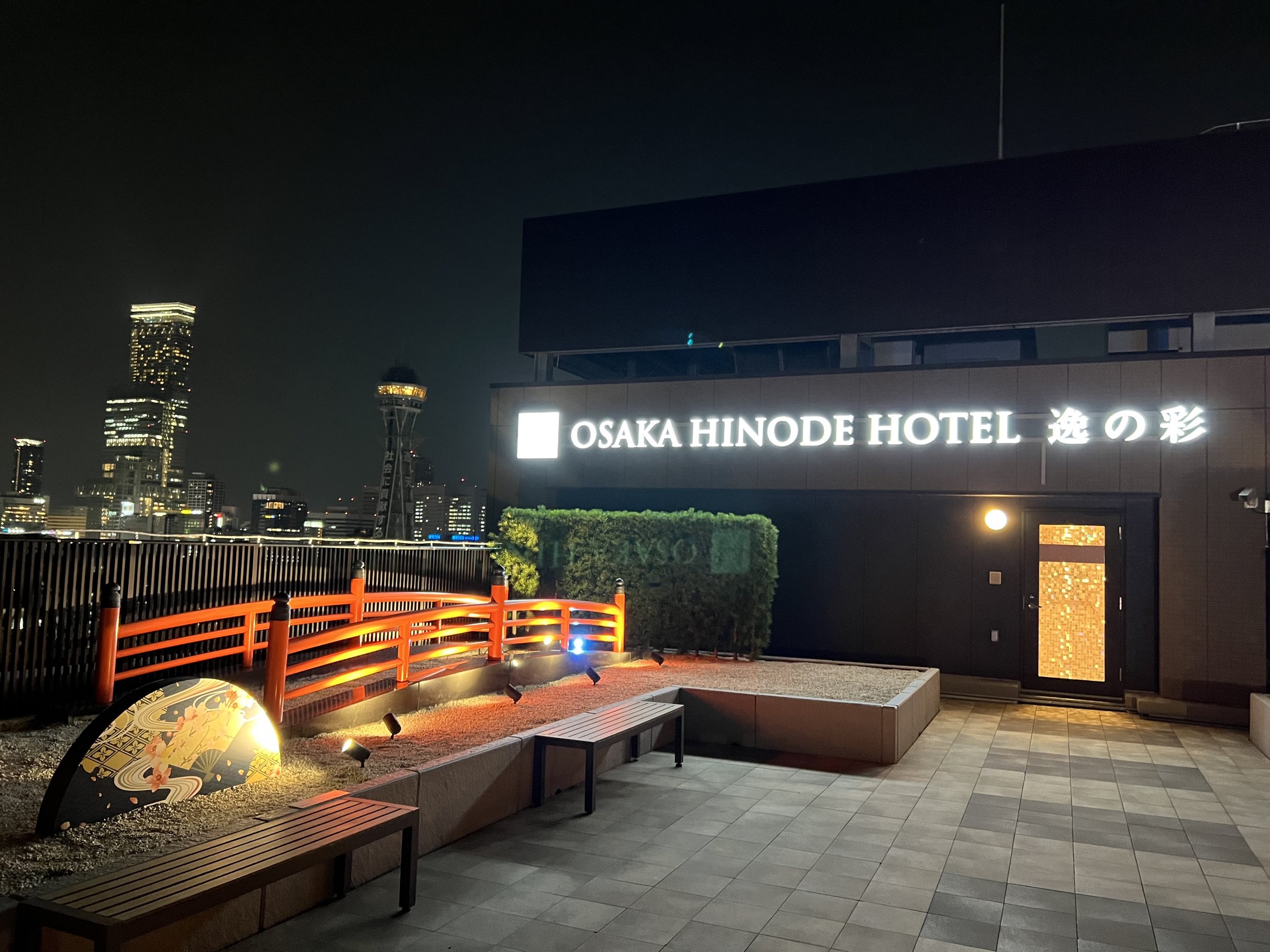Why You Should Visit Shirakawa-go in Spring: A Complete Guide
Shirakawa-go (白川郷), tucked away in Gifu Prefecture in central Japan, is a beautifully preserved traditional village best known for its gassho-zukuri farmhouses (steeply thatched roofs built to withstand heavy snow). Registered as a UNESCO World Cultural Heritage Site in 1995, Shirakawa-go is known for its fairytale snowy landscapes in winter, but spring also brings its own colourful magic.
When I visited in spring, Shirakawa-go felt like a scene from a painting—sakura trees framing the old wooden houses, petals drifting down the river, and carp-shaped windsocks swaying in the breeze. In this guide, I’ll share my favorite spots, things to do, and travel tips to help you plan a spring visit to this beautiful village.
Why Visit Shirakawa-go in Spring
As winter fades, Shirakawa-go transforms into a landscape of soft colors and fresh greenery. The iconic thatched-roof farmhouses, framed by cherry blossoms and backed by snow-capped mountains, create a scene straight out of a fairytale.
Cherry blossoms here typically bloom from mid-April to early May, later than in cities like Tokyo and Kyoto (for reference, the photos in this article were taken on April 22, 2023). In addition to sakura, spring flowers like tulips and rapeseed bring additional colours, making every corner of the village a dream for photographers. And if you visit in late May, you might catch the Rice Planting Festival, where local young women plant rice in traditional attire while singing folk songs.
Explore Shirakawago With Me: Favorite Things to Do in Spring
In this section, I'll share with you my experience of a day trip to Shirakawa-go in the spring from Kanazawa, as well as my favourite places, and give you a glimpse of the walk I took through the village.
As soon as I arrived in Shirakawa-go, I headed straight to the Shiroyama Tenshukaku Observation Deck (城山天守閣 展望台) for a panoramic view of the village. The walk from the bus station takes about 15 minutes, but a shuttle bus is also available for a small fee. I think it's a great first spot to visit when you’re in Shirakawa-go, as the view from the top is truly magnificent and gives you an idea of what the whole village looks like.
Back in the village, I spent time wandering through the streets of Ogimachi (荻町), soaking in the spring atmosphere and capturing the scenery. Some of the gassho-zukuri houses are open to the public, including Wada House (和田家住宅) and Kanda House (神田家), which you can enter for ¥400 each. If you have time, I’d definitely recommend visiting at least one to appreciate the traditional architecture from the inside.
As I continued my walk through the village, I wasn’t just admiring the cherry blossoms and spring flowers, but also the large and colorful koinobori (鯉のぼり) fluttering in the breeze. These carp-shaped windsocks are hung across Japan from April through early May as a celebration of childhood until Children’s Day (Kodomo no Hi), which takes place early May during the Golden Week.
I particularly enjoyed visiting Shirakawa Hachiman Shrine (白川八幡神社), a peaceful, uncrowded shrine surrounded by towering trees. Many visitors end their walk at the shrine, but if you’re up for a longer stroll, I’d recommend continuing to the Shirakawa-go Three Houses (三小屋). It’s a great photography spot away from the crowds.
Shirakawa Hachiman Shrine
Shirakawa-go Three Houses
After crossing Deai Bridge (であい橋) over the river, I decided to visit Shirakawa-go Gassho-Zukuri Minka-en (白川郷合掌造り民家園). If you're willing to spend a little, I highly recommend visiting this open-air museum (¥600 entrance fee) which was nearly empty when I visited, in contrast to other parts of the village that can get crowded. The museum features 26 historic buildings, including 9 which are designated as important cultural properties by Gifu Prefecture, some of which you can enter, offering a closer look at traditional village life. It was one of the highlights of my spring visit to Shirakawa-go.
Shirakawa-go Gassho-Zukuri Minka-en
After exploring the museum, it was time to head back to the bus terminal for my return trip to Kanazawa. I wished I could have stayed longer, but with a pre-booked return ticket, I had to leave on schedule. If I had had more time, I would have loved to sit by the Shō River, taking in more of Shirakawa-go’s spring beauty, or relax in a natural hot spring in the open-air baths of Shirakawa-go no Yu (天然温泉 白川郷の湯). The onsen is open for day-trippers from 7am to 9pm (closed on Thursdays) and costs ¥800.
Top Travel Tips to Make the Most of You Time in Shirakawa-go
When to Visit to See the Cherry Blossom
Because Shirakawa-go is located in the mountains, cherry blossoms bloom later here than in places like Kanazawa, usually around late April. Even if you miss peak sakura season, spring still offers plenty to enjoy, with other flowers like tulips or rapeseed blossoms adding vibrant color to the village landscape.
How to Get to Shirakawa-go
Shirakawa-go is not directly connected by train, so the most convenient way to reach the village is by bus or car. Most travelers visit from Takayama (高山市) or Kanazawa (金沢市) which have direct bus routes:
From Kanazawa, the journey takes around 1 hour and 15 minutes and costs ¥2,800 one way. The Hokutetsu Bus and Nohi Bus companies run regular highway bus services between Kanazawa Station and Shirakawa-go.
From Takayama, you can take a Nohi Bus to Shirakawa-go (~50 min, ¥2,800 one-way).
You can find more information on bus timetables and how to book your ticket on the Hokutetsu Bus website and Nohi Bus website. You can reserve your bus tickets online or at the bus centers in Kanazawa or Takayama (I’d recommend to book your tickets in advance, especially if you’re going on a weekend or during peak season).
If you're looking to explore Shirakawa-go with the convenience of a guided tour, several platforms, such as GetYourGuide, Klook and KKDay, offer a variety of options with full-day tours departing from cities like Nagoya, Kanazawa or Takayama, for hassle-free arrangements.
Finally, if you're renting a car, you can reach Shirakawa-go via the Tokai-Hokuriku Expressway. Parking is available at the Shirakawa-go Seseragi Park parking lot and costs ¥1,000 per day. For more information about how to get to Shirakawa-go, you can also check the Shirakawa-go Tourism Association’s website.
How Long to Spend in Shirakawa-go
A half-day or full-day visit is enough to see the highlights of Shirakawa-go. When I went in the spring, I spent about 4 hours in Shirakawa-go and couldn't stay longer because there were no return bus tickets to Kanazawa available later in the day. If you want to experience Shirakawa-go at a relaxed pace, I recommend spending the full day. This gives you time to visit some of the traditional houses and the open-air museum, enjoy lunch at a local restaurant, sit by the river to take in the scenery, and maybe even unwind in a hot spring bath before leaving to your next destination.
If you have more time, I think spending the night in Shirakawa-go is a great idea. It allows you to experience the village without the daytime crowds. It’s also perfect for photography lovers hoping to catch the soft light of sunrise and sunset, or for anyone who wants to slow down and fully immerse themselves in this traditional and peaceful setting. So far, I’ve visited Shirakawa-go in winter and spring as day trips, but next time, I hope to stay overnight, maybe in summer or autumn, to see this different side of the village.
Where to Stay in Shirakawa-go
If you’d like to stay in a traditional gassho-style farmhouse, the Shirakawa-go Tourism Association website provides a list of accommodations, including traditional gassho houses, in the village.
For those looking for a classic ryokan experience, I’d recommend Shiroyamakan, praised for its delicious cuisine and idyllic location right in Ogimachi. If you prefer a more modern stay, CURIO Shirakawago, a stylish boutique hotel located about 15 minute walk from the bus terminal seems like a great option, while Shirakawago Guest House Kei is a solid choice for budget-conscious travelers. Finally, a little further away but with a free shuttle bus from the bus station, a beautiful modern ryokan that looks like a fantastic option is Shirakawago Onyado Yuinosho, with spacious rooms, onsen baths and kaiseki dining options.
➡️ You can look for more accommodation options around Shirakawa-go on Agoda, Booking or Trip.
What and Where to Eat in Shirakawa-go
While exploring Shirakawa-go, make sure to try some of the local food specialties, like Hida beef skewers or Gohei mochi (a grilled, flat rice cake coated in a savory-sweet sauce made from miso, soy sauce, and walnuts). You’ll also find a number of restaurants in the village serving hearty set meals, as well as cozy cafés tucked inside old gassho-style houses, perfect for a dessert break. During one of my two visits to Shirakawa-go, I stopped at Shiraogi (しらおぎ) and had a filling and delicious miso katsu teishoku. It was the perfect lunch to recharge during an exploring day!
Final Thoughts on Visiting Shirakawa-go in Spring
Spring brings a quieter, softer charm to Shirakawa-go—filled with blossoms, fresh mountain air, and the timeless beauty of traditional Japan. I truly enjoyed my spring visit just as much as my winter trip, which I’ll share more about in a future article. I hope this guide helps you plan your own journey to this beautiful village in central Japan!
Planning to visit Kanazawa on your way to or from Shirakawa-go? Check out my detailed 2-day Kanazawa itinerary guide.
Found this article helpful? Buy me a coffee. 😊
Want to stay in touch? Subscribe to my monthly newsletter (with latest articles, updates, travel tips and more...) delivered straight to your inbox. 📩
Some of the links in this Shirakawa-go Spring Guide are affiliate links. At no extra cost to you, I may earn a small commission when you click on them and make a purchase. And if you do, thanks for your support! Purchasing through these links is a great way to support Travely Notes, as this helps with the costs of running my blog.













